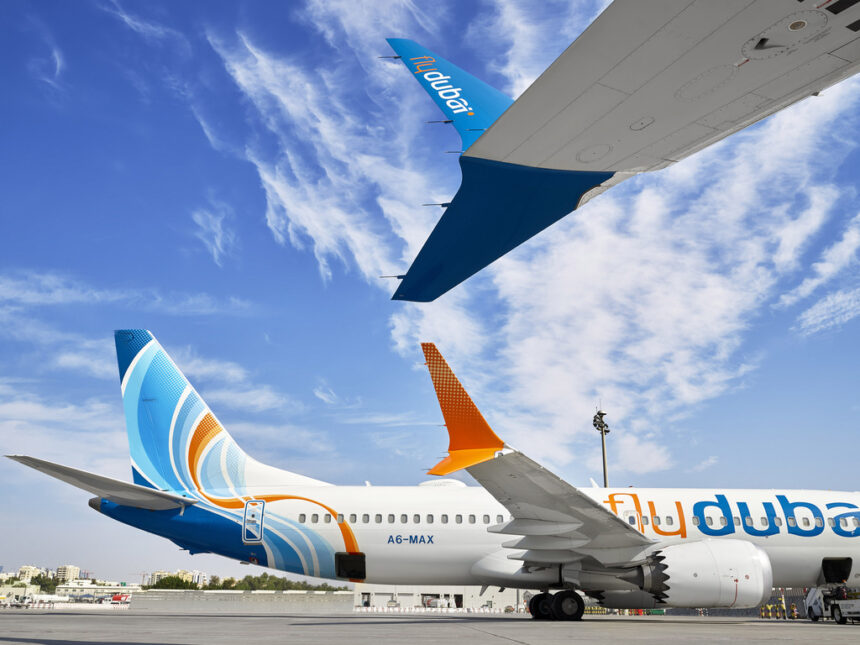With mounting capacity issues at some of the UK’s major international airports, NATS have partnered up with several European organisations including SESAR to study how single runway operations might be made more efficient.
National Air Traffic Services (NATS) are the UK’s leading provider of air traffic control services, and handle over 2.5 million flights each year. They hope the outcome will be a ‘paradigm shift’ in how aircraft separation for departures can be managed.
Wake turbulence
Wake turbulence is caused by vortices – counter-rotating cylindrical air masses which trail aft from the aircraft.
They are present behind every aircraft, but in general the strength is proportional to the weight (and decrease in speed) of an aircraft.
When another aircraft encounters wake turbulence, it can result in severe rolling motion, sometimes exceeding the roll-control authority of the aircraft.

[monsterinsights_popular_posts_inline]
To help avoid wake turbulence encounters, there are minimum separation standards for aircraft – both for take-off and landing.
Generally, these divide aircraft into 6 categories based on their weight, and wake separation uses time or distance based separation to help prevent aircraft flying through the wake of another, heavier aircraft.
For example, in the UK a medium aircraft (weight between 7000 to 136,000kg) landing after a heavy aircraft requires a 5nm separation, while a medium departing after a heavy requires at least 2 minutes separation.
More information on separation standards and wake turbulence can be found from various sources such as this NATS safety circular.
Why does it need a review?
The current time based separation for departures reduces the efficiency of runways. Departures have to be staggered, leading to reduced departure frequency.
Often, ATC will attempt to coordinate similar sized aircraft which can result in categories being held on the ground for longer periods, which is inefficient fuel wise.
As NATS say: “Punctuality is key and the value of departure slots is counted in millions of pounds, a little delay can add up to a large economic and environmental cost”. This is especially challenging with single runway airports.
London Heathrow airport (LHR), where NATS is considering trials in the future, is currently running at over 98% capacity – which is around 480,000 flights a year.
This is significantly lower than the runway capacity at Europe’s primary hub airports Amsterdam (AMS), Paris Charles de Gaulle (CDG), Frankfurt (FRA) and Madrid (MAD).

What will the new concept look like?
The SESAR Dynamic Pairwise Separation Project is still in the early stages of consideration, but the concept involves considering the climb performance and profiles of smaller aircraft which tend to have shorter take-off runs.
This means that they lift off at a point earlier along the runway, and can achieve steeper climb angles that larger aircraft.
Time separation could be suspended where it is assessed that the smaller aircraft path can remain above the more shallow path – so remaining ‘outside the volume of disturbed air’.
The suspension of time based separation could result in a 50% reduction in separation time between some aircraft pairs, enabling a higher frequency of departures from a single runway and much more efficient operations.
What’s the hold up?
The concept of ‘tailored’ separation spacing will require a study of a wide range of aircraft types and performance behaviours simulated within various operating conditions.
Aircraft performance varies significantly, so departure trajectories and spacing will need to be considered dynamically for different leader-follower pairs.
Additionally, considerations of non-standard scenarios including emergency procedures will need to be studied to ensure mitigations are available in the case of engine failures, or other events which might change the ‘planned’ trajectory and so reduce separation to within unsafe margins.
More on the story can be read on the NATS Blog here. This is not the only airspace efficiency project NATS have underway.
In 2021 they implemented the largest change to UK airspace in its history, when they started the introduction of Free Route Airspace (FRA).
A second deployment took place in early 2023, expanding the region of available FRA which now covers part of the North Sea, Scotland, North Atlantic, Northern Ireland and a portion of northern and south England.









